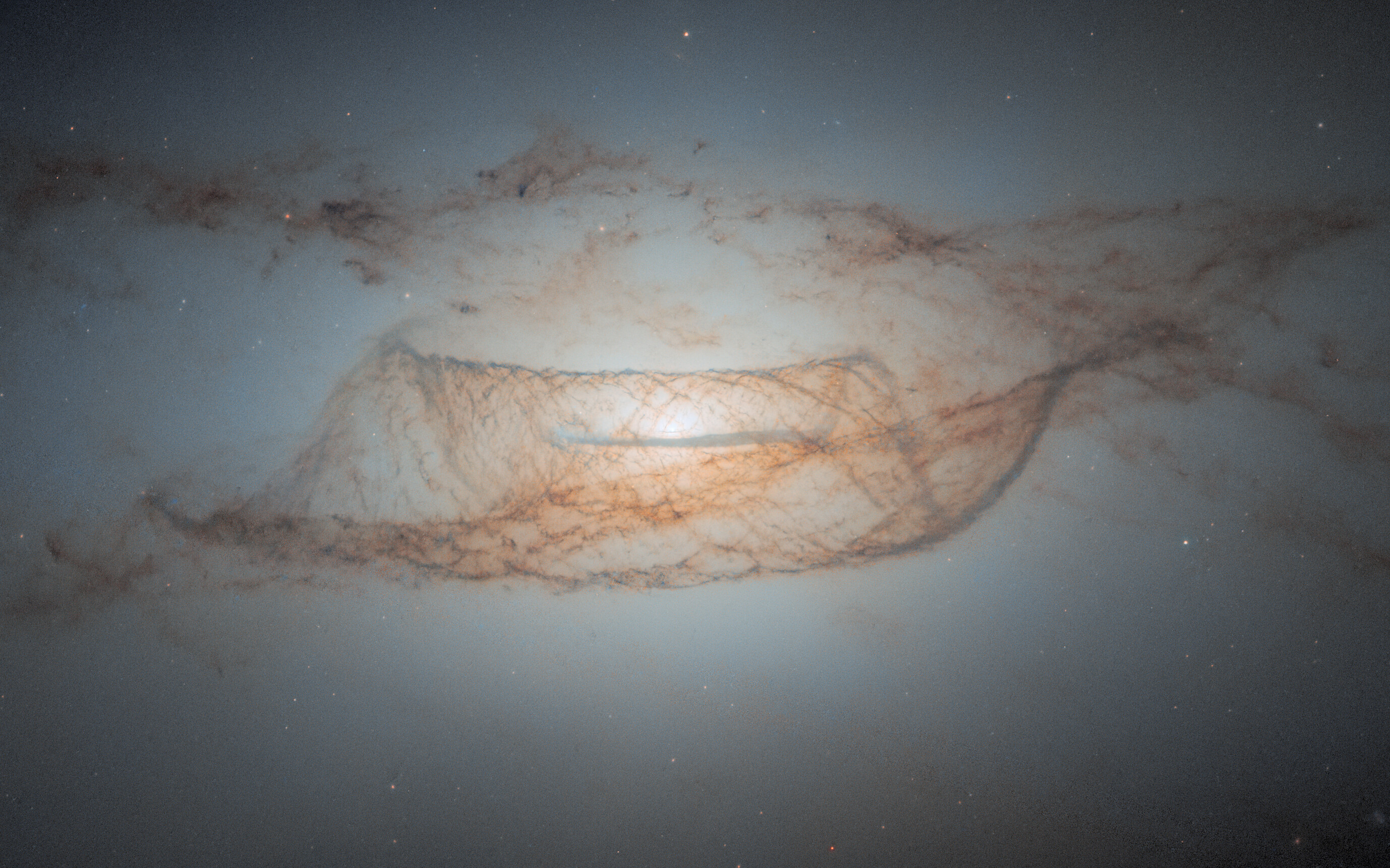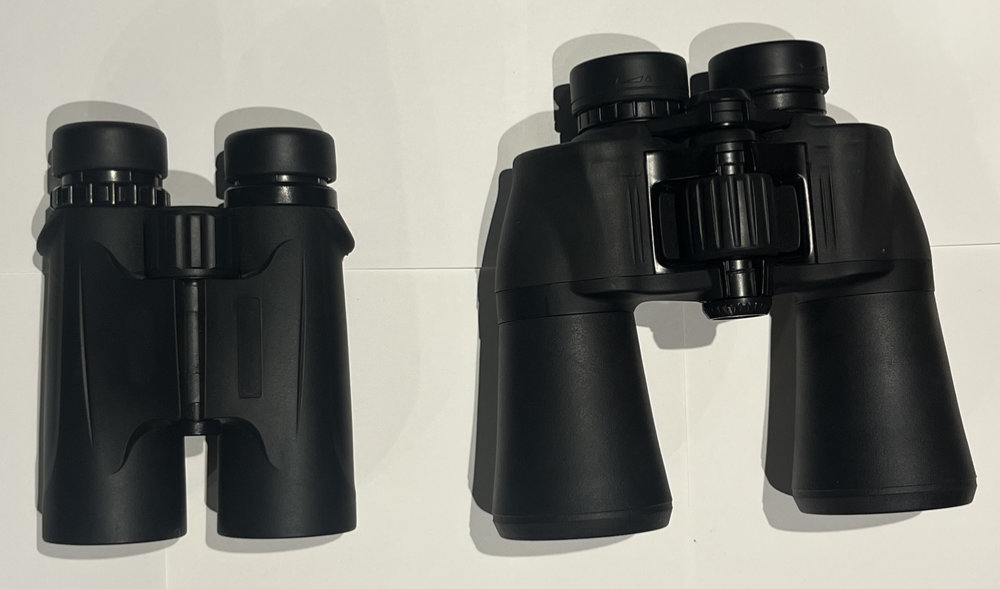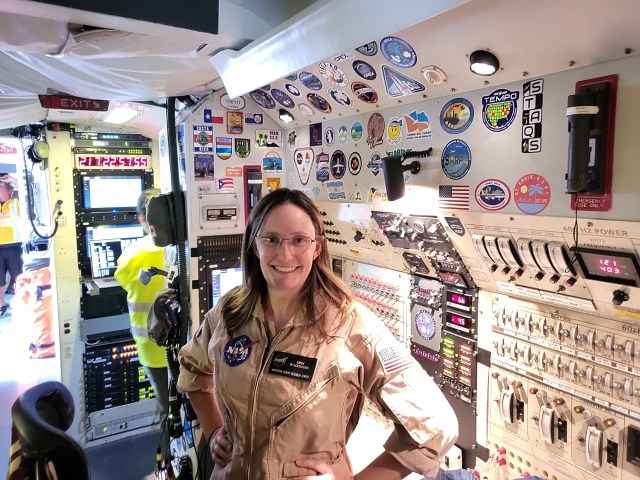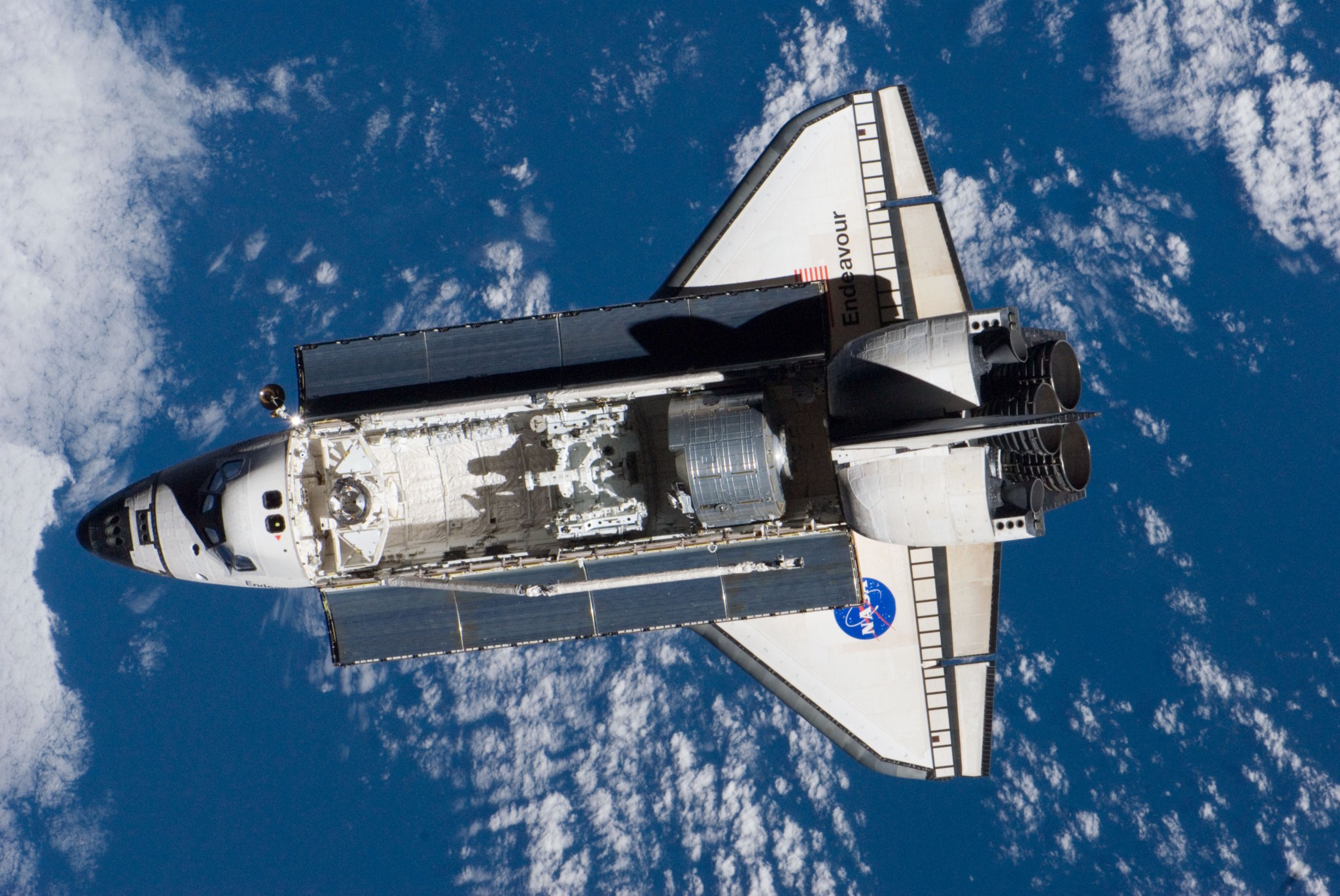NASA Mega Moon Rocket Passes Key Test, Readies for Launch
The largest rocket element NASA has ever built, the core stage of NASA’s Space Launch System rocket, fired its four RS-25 engines for 8 minutes and 19 seconds March 18 at NASA’s Stennis Space Center. The successful test, known as a hot fire, is a critical milestone ahead of the agency’s Artemis I mission, which will send an uncrewed Orion spacecraft on a test flight around the Moon and back to Earth, paving the way for future Artemis missions with astronauts.
Engineers designed the eight-part Green Run test campaign to gradually bring the SLS core stage to life for the first time, culminating with the hot fire. The team will use data from the tests to validate the core stage design for flight.
“The SLS is the most powerful rocket NASA has ever built, and during today’s test the core stage of the rocket generated more than 1.6 million pounds of thrust within seven seconds,” acting NASA Administrator Steve Jurczyk said. “The SLS is an incredible feat of engineering and the only rocket capable of powering America’s next-generation missions that will place the first woman and the next man on the Moon. Today’s successful hot fire test of the core stage for the SLS is an important milestone in NASA’s goal to return humans to the lunar surface – and beyond.”
NASA previously conducted a hot fire test of the SLS core stage Jan. 16. The four RS-25 engines fired together for the first time for about one minute before the test ended earlier than planned. Following data analysis, NASA determined a second, longer hot fire test would provide valuable data to help verify the core stage design for flight, while posing minimal risk to the Artemis I core stage.
During the second hot fire test, the stage fired the engines for a little more than eight minutes, just like it will during every Artemis launch to the Moon. The longer duration hot fire tested a variety of operational conditions, including moving the four engines in specific patterns to direct thrust and powering the engines up to 109% power, throttling down and back up, as they will during flight.
“This longer hot fire test provided the wealth of data we needed to ensure the SLS core stage can power every SLS rocket successfully,” said John Honeycutt, manager for the SLS Program at NASA’s Marshall Space Flight Center. “During this test, the team conducted new operations with the core stage for the first time, repeated some critical operations, and recorded test data that will help us verify the core stage is ready for the first and future SLS flights for NASA’s Artemis program.”
The two propellant tanks in the SLS core stage collectively hold more than 733,000 gallons of supercold liquid hydrogen and liquid oxygen to help fuel the RS-25 engines at the bottom of the stage. The core stage has a complex network of flight software and avionics systems designed to help fly, track, and steer the rocket during launch and flight. Prior tests in the Green Run test series evaluated the integrated functionality and performance of the core stage’s avionics systems, propulsion systems, and hydraulic systems.
“Today is a great day for NASA, Stennis, and this nation’s human space exploration program,” Stennis Director Richard Gilbrech said. “This final test in the Green Run series represents a major milestone for this nation’s return to the Moon and eventual mission to Mars. So many people across the agency and the nation contributed to this SLS core stage, but special recognition is due to the blended team of test operators, engineers, and support personnel for an exemplary effort in conducting the test today.”
Test teams at Stennis supervised a network of 114 tanker trucks and six propellant barges that provided liquid propellant through the B-2 Test Stand to the core stage. Test teams also delivered operational electrical power, supplied more than 330,000 gallons of water per minute to the stand’s flame deflector, and monitored structural interfaces of both the hardware and the stand.
Testing the SLS rocket’s core stage is a combined effort for NASA and its industry partners. Boeing is the prime contractor for the core stage and Aerojet Rocketdyne is the prime contractor for the RS-25 engines.
Next, the core stage will be refurbished, then shipped to NASA’s Kennedy Space Center. There, the core stage will be assembled with the solid rocket boosters and other parts of the rocket and NASA’s Orion spacecraft on the mobile launcher inside the Vehicle Assembly Building at Kennedy in preparation for Artemis I.
SLS, Orion, and the ground systems at Kennedy, along with the human landing system and the Gateway in orbit around the Moon, are NASA’s backbone for deep space exploration. SLS is the only rocket that can send Orion, astronauts, and supplies to the Moon on a single mission. The exploration of the Moon with NASA’s Artemis program includes preparations to send astronauts to Mars as part of America’s Moon to Mars exploration approach.
Marshall Payload Operations Increase Capabilities, to Play Vital Role in Multiple Future NASA Missions
By Daniel Boyette
Dwight Mosby has good reason to be excited about the future.
Mosby, manager of the Payload and Mission Operations Division at NASA’s Marshall Space Flight Center, oversees an organization that has undergone a transformation in recent years. Long renowned for its work with the International Space Station, Marshall’s payload operations have grown to support multiple missions. The group is preparing for additional responsibilities over the next 10-15 years as NASA plans for parallel human mission and payload operations in low-Earth orbit, deep space near the Moon, on the lunar surface, in transit to Mars, and ultimately on and around the Red Planet.
“We wanted to expand the center’s operational capabilities and preserve Marshall’s future when it comes to space utilization and science mission operations,” said Mosby, who is also payload operations cost account manager. “I think we’ve definitely done that. We have truly become a multi-operational, multi-support project.”
Located within the Huntsville Operations Support Center, or HOSC, Marshall’s Payload Operations Integration Center has been staffed 24 hours a day, seven days a week, and 365 days a year since 2001. Even during a global pandemic, its team manages space station payload resources, science communications with the crew, and data transmissions to and from the orbiting laboratory.
Among the added roles for Marshall payload operations are support for Commercial Crew Program launches, serving as backup center for telemetry for multiple commercial resupply providers that deliver cargo to the space station, having data and connectivity responsibilities for its international partners’ payload control centers, providing data and training for commercial companies embarking into the low-Earth orbit economy, and the HOSC serving as a backup for mission control at NASA’s Johnson Space Center.
In preparation for NASA’s Artemis Moon missions, the HOSC configured multiple support rooms for Space Launch System launch day activities. Operations for the upcoming Marshall-led Near-Earth Asteroid Scout CubeSat and Solar Cruiser SmallSat missions will be housed in the HOSC. Mosby and company are involved in the formulation phase for the lunar Gateway, developing specifications for network, command, telemetry, and data routing systems that will be needed to support payload developers. Marshall will become more involved over the next 18 months as Gateway moves into the developmental phase. The HOSC will also support the Lunar Node 1 navigation beacon and the Mars Ascent Vehicle.
“Not many operations facilities are able to process, protect, and globally distribute data that is being downlinked at 600 megabits per second,” said Kathy Byars, assistant payload operations manager for the current six-month mission aboard the space station. By comparison, the average download speed for fixed broadband internet in the United States was 180 megabits per second in February, according to SpeedTest.net. “That is quite a feat. We’re also providing critical infrastructure for real-time operations. This is the kind of performance that we know we’re going to continue to need in order to successfully support future missions.”
Adding those additional responsibilities, some of which will require around-the-clock operations, presents multiple challenges to the HOSC, notably finding enough space to host teams. Some payload operations team members could work remotely – an option that has been tested during the COVID-19 pandemic – to free up space, but Mosby sees additional ways that operations can be streamlined.
“We’re looking to automate a lot of our ground processes,” he said. “The key is the automation we’re building into some of the concepts for the Gateway and lander programs; this helps us become a smaller footprint program.”
Automated tools are essential for producing autonomous systems – a needed future capability. Automation of tasks allow the crew and ground teams to focus on more essential, human-operated tasks, such as performing scientific research, Byars said.
The farther into space that NASA missions venture, the longer the communications delay. Mosby noted that there could be a 20-minute delay in receiving communications from near Mars, and by the time his team receives a notice, the event could already be over. That’s where technology like automation and self-correcting systems will play an integral part in crew and spacecraft safety, and preserving the science. A version of such technology is already in use: Higher Active Logic, an autonomous and continuously executing system aboard the space station. It mimics human decision processes to minimize flight controller interaction in routine tasks.
“That helps streamline a lot of the commanding that a payload rack officer has to do on the ground,” Mosby said. “We’re looking at implementing more systems like that. We’ve put in place single-push button rack activation capabilities for crew members. Whereas on the ground, we have to send close to 12 commands to activate a rack, that can be done in a single button push.”
For Mosby, who has been involved in payloads since 1996, it’s not just upcoming missions that excite him. What he’s looking forward to most is working with the people who will be a part of those endeavors.
“Seeing the evolution of payloads has been amazing,” he said. “The joy for me is being able to help those who are just coming in, help them figure out how to navigate this industry, and groom them to be future leaders. That’s been the most interesting part to me – the people, the relationships, and the challenges as the world changes.”
For more on the International Space Station’s 20th anniversary, visit here.
Boyette, an LSINC Corporation employee and the Marshall Star editor, supports Marshall’s Office of Strategic Analysis & Communications.
Marshall Provides Updates, Encourages Partnerships at Small Business Alliance Meeting
Speakers at the 31st Marshall Small Business Alliance meeting, held virtually March 18, included, clockwise from top left: David Brock, small business specialist at NASA’s Marshall Space Flight Center; Reggie Alexander, manager of Marshall’s Partnerships & Formulation Office; David Burns, manager of Marshall’s Science and Technology Office; and Charlie Nola, manager of the International Space Station Projects Office at Marshall. More than 600 industry leaders from across the country attended the meeting and received updates on various Marshall offices and missions, and the center’s Small Business Office. Marshall Deputy Director Rick Burt noted that the number of direct dollars that Marshall has invested in small businesses over the past decade has increased by 60%, and that since 2005, the amount has increased by more than 130%. Marshall currently works with about 200 small business. “It’s small businesses like yours that bring new ideas to the table and help make the business of space exploration more innovative and efficient,” Burt said. The meeting also featured updates on acquisition and agency product service lines from representatives of Marshall and other NASA centers, and three breakout sessions. (NASA)
NASA, Partners Test 3D-Printed Rocket Pad Designed by Artemis Generation Students
On March 6, a team of students from colleges and universities across the United States – members of the Artemis Generation – fired a hot rocket engine to test the capability of a 3D-printed launch and landing pad during an exercise at Camp Swift in Bastrop, Texas. The students’ design concept – called the Lunar Plume Alleviation Device, or Lunar PAD – aims to solve problems caused by rising lunar dust during launches and landings. The students proposed the new design for a competitive proposal writing workshop led by the Office of the Chief Technologist at NASA’s Marshall Space Flight Center and the L’SPACE Academy – the student collaboration project for NASA’s Lucy mission at Arizona State University in Tempe. The team won funding to print and test a small-scale prototype with help from NASA’s Moon to Mars Planetary Autonomous Construction Technologies, or MMPACT, project; Austin, Texas-based construction technologies startup ICON; and the Sounding Rocketry Team at Texas A&M University in College Station. Artemis is NASA’s robotic and human return to the Moon. Inspiring the next generation of explorers ensures America will continue to lead in space exploration and discovery. MMPACT is funded by NASA’s Game Changing Development Program. (ICON)
Gigantic Jet Spied from Black Hole in Early Universe
Using NASA’s Chandra X-ray Observatory, astronomers have discovered evidence for an extraordinarily long jet of particles coming from a supermassive black hole in the early universe.
If confirmed, it would be the most distant supermassive black hole with a jet detected in X-rays. Coming from a galaxy about 12.7 billion light-years from Earth, the jet may help explain how the biggest black holes formed at a very early time in the universe’s history.

The source of the jet is a quasar – a rapidly growing supermassive black hole – named PSO J352.4034-15.3373, or PJ352-15 for short – that sits at the center of a young galaxy. It is one of the two most powerful quasars detected in radio waves in the first billion years after the big bang, and is about a billion times more massive than the Sun.
This study will help scientists answer how supermassive black holes were able to grow so quickly in the early epoch of that universe.
Despite their powerful gravity and fearsome reputation, black holes do not inevitably pull in everything that approaches close to them. Material orbiting around a black hole in a disk needs to lose speed and energy before it can fall farther inward to cross the so-called event horizon, the point of no return. Magnetic fields can cause a braking effect on the disk as they power a jet, one key way for disk material to lose energy and, therefore, enhance the growth rate of black holes.
“If a playground merry-go-round is moving too fast, it’s hard for a child to move toward the center, so someone or something needs to slow the ride down,” said Thomas Connor of NASA’s Jet Propulsion Laboratory, who led the study. “Around supermassive black holes, we think jets can take enough energy away so material can fall inward and the black hole can grow.”
Astronomers needed to observe PJ352-15 for three days using the sharp vision of Chandra to detect evidence for the X-ray jet. X-ray emission was detected about 160,000 light-years away from the quasar along the same direction as much shorter jets previously seen in radio waves by the Very Long Baseline Array. By comparison, the entire Milky Way spans about 100,000 light-years.
PJ352-15 breaks a couple of astronomical records. First, the longest jet previously observed from the first billion years after the big bang was only about 5,000 light-years in length, corresponding to the radio observations of PJ352-15. Second, PJ352-15 is about 300 million light-years farther away than the most distant X-ray jet recorded before it.
“The length of this jet is significant because it means that the supermassive black hole powering it has been growing for a considerable period of time,” said co-author Eduardo Bañados of the Max Planck Institute for Astronomy in Heidelberg, Germany. “This result underscores how X-ray studies of distant quasars provide a critical way to study the growth of the most distant supermassive black holes.”
The light detected from this jet was emitted when the universe was only 0.98 billion years old, less than a tenth of its present age. At this point, the intensity of the cosmic microwave background radiation left over from the big bang was much greater than it is today.
As the electrons in the jet fly away from the black hole at close to the speed of light, they move through and collide with photons making up the cosmic microwave background radiation, boosting the energy of the photons up into the X-ray range to be detected by Chandra. In this scenario, the X-rays are significantly boosted in brightness compared to radio waves. This agrees with the observation that the large X-ray jet feature has no associated radio emission.
“Our result shows that X-ray observations can be one of the best ways to study quasars with jets in the early Universe,” said co-author Daniel Stern, also of JPL. “Or to put it another way, X-ray observations in the future may be the key to unlocking the secrets of our cosmic past.”
NASA’s Marshall Space Flight Center manages the Chandra program. The Smithsonian Astrophysical Observatory’s Chandra X-ray Center controls science from Cambridge, Massachusetts and flight operations from Burlington, Massachusetts.
Read more the Chandra X-ray Center here. For more Chandra images, multimedia, and related materials, visit here.
David Voracek, Armstrong Chief Technologist, to Deliver Virtual Tech Talk
David Voracek, chief technologist at NASA’s Armstrong Flight Research Center, will deliver a virtual Tech Talk at 1 p.m. March 25. Armstrong – the home of NASA’s X-planes – is one of the agencies leaders in aeronautics, simulation engineering, and aircraft safety. Voracek will discuss Armstrong’s priorities and opportunities for collaboration. The talk will be streamed via Webex; login information can be found here. The Tech Talk series is presented by the Marshall Center Chief Technologist’s Office. (NASA)
Juno’s Dawn Storms Investigations Highlighted on ‘This Week @NASA’
The NASA Juno mission’s study of dawn storms on Jupiter is featured in “This Week @NASA,” a weekly video program broadcast on NASA-TV and posted online.
New results from Juno have revealed that these storms are born on Jupiter’s night side, which Juno can see because it orbits over the planet’s poles. Dawn storms are intense, early morning brightening of aurorae that occur at both Jovian poles. These are specific to Jupiter, but researchers say they are very similar to a type of terrestrial aurora called substorms. The findings could provide a better understanding about how these planetary phenomena occur on worlds both within and beyond the solar system.
Juno is part of the Science Mission Directorate’s New Frontiers Program, managed by NASA’s Marshall Space Flight Center.
View this and previous episodes at “This Week @NASA” on NASA’s YouTube page.
This Week in NASA History: STS-123 Lands – March 26, 2008
This week in 2008, the space shuttle Endeavour, mission STS-123, safely landed at NASA’s Kennedy Space Center following a successful 15-day mission to the International Space Station. The mission delivered NASA astronaut Garret Reisman to the station and returned European Space Agency astronaut Léopold Eyharts to Earth. Endeavour also carried the Canadian-built Dextre robotic system and the logistics module for the Japanese Kibo laboratory, both visible here in the orbiter’s cargo bay. Today, the Payload Operations Integration Center at NASA’s Marshall Space Flight Center serves as “science central” for the International Space Station, working 24/7, 365 days a year in support of the orbiting laboratory’s science experiments. After 20 years of continuous human presence, the space station remains the sole space-based proving ground and stepping stone toward achieving the goals of the Artemis program. The NASA History Program is responsible for generating, disseminating, and preserving NASA’s remarkable history and providing a comprehensive understanding of the institutional, cultural, social, political, economic, technological, and scientific aspects of NASA’s activities in aeronautics and space. For more pictures like this one and to connect to NASA’s history, visit the Marshall History Program’s webpage. (NASA)



































